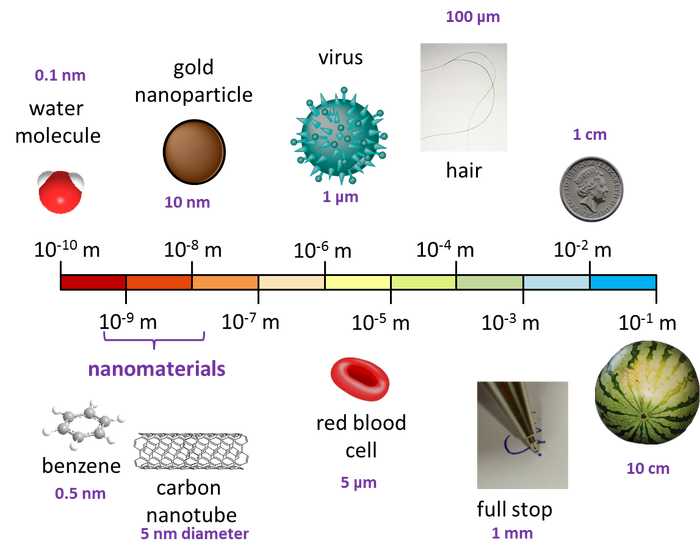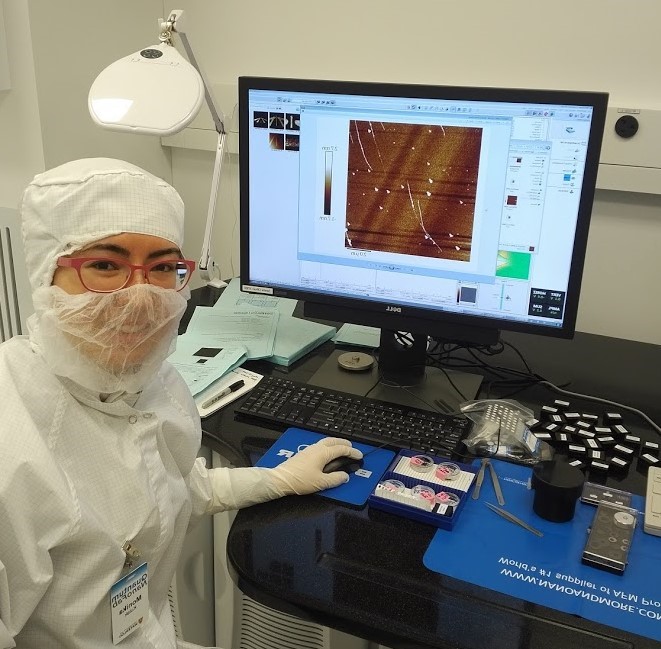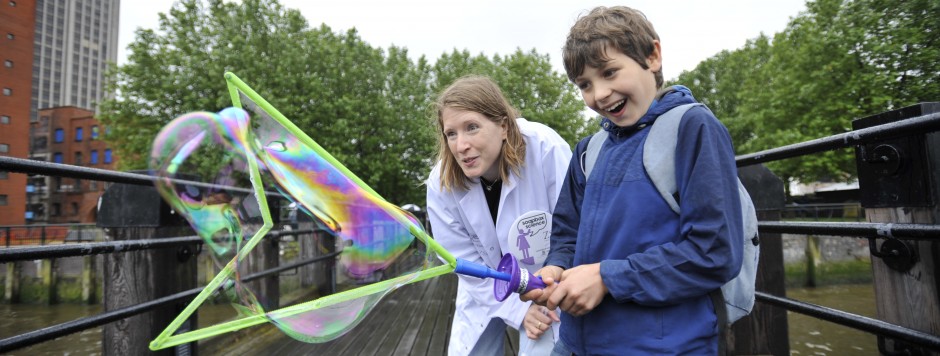 Monika Snowdon (@MonikaSnowSci), a PhD Candidate in the Department of Chemistry and Nanotechnology at the University of Waterloo is taking part in Soapbox Science Waterloo on June 9th, 2019 with the talk “The pursuit of creating faster electronics through ART (Alignment Relay Technique)”. Her doctoral work focuses on controlling the arrangement of very small tubes in a nice tidy manner, so they can be used for faster and more efficient electronic devices like cell phones and computers. Her advice is to just try things that spark an interest and see where they can lead.
Monika Snowdon (@MonikaSnowSci), a PhD Candidate in the Department of Chemistry and Nanotechnology at the University of Waterloo is taking part in Soapbox Science Waterloo on June 9th, 2019 with the talk “The pursuit of creating faster electronics through ART (Alignment Relay Technique)”. Her doctoral work focuses on controlling the arrangement of very small tubes in a nice tidy manner, so they can be used for faster and more efficient electronic devices like cell phones and computers. Her advice is to just try things that spark an interest and see where they can lead.
The term “Nano” has taken the world by storm in the past 15 years. Nano is used to describe tiny structures that are one million times smaller than a meter! Nanotechnologists try to build nanotools that are only seen under a microscope. To imagine how amazingly small nano is think of an ant which is huge at the nanoscale as it measures 5 million nanometers long (or about 5 milimetres) or our fingernails which grow at about 1 nm per second each day or the fact that a 7-foot tall basketball player is about 2 billion nanometers tall! The diagram below shows other examples of materials with their corresponding nano-range.

Figure 1. Diagram of different products represented on a meter scale so you can compare how small nano is! From https://chembam.com/definitions/nanotechnology/
So, nano is simply the name used for a scale at which science can be conducted. Nanomaterials have always existed, even though we were not able to see their structures, for example the dyes used in stained-glass windows in churches. Medieval stained-glass makers were the first nanoscientists, as they trapped gold nanoparticles in the glass to create crimson red colours, while silver nanoparticles were used to create the yellow colors.[1] These tiny nanoparticles are all around us, but we never had the technology to correctly see them until now. With powerful microscopes we can harness their full potential and we can now manipulate them to make cell phones that are more lightweight and flexible, or design better and cheaper medicines and cosmetics that are better for the skin.[2] This is why nanotechnology is booming!
Nano applications can be seen in all sciences, so anyone who enjoys learning about different sciences can enjoy a career in nano because it offers limitless possibilities. I am currently researching how to make faster and smaller electronics. To do this, I arrange tiny tubes using ART which stands for Alignment Relay Technique. ART involves adding a unique liquid to make special molecules float such that they can horizontally align on a surface. Once the liquid is removed the molecules are set on a surface keeping their tiny positions, similar to how kids hold hands in a line. Then, tiny tubes – nanotubes- are placed on top of the molecules, matching at only certain places – like puzzle pieces. Once ART does its job, I use an Atomic Force Microscope or AFM for short, which is very powerful and lets me check if the nanotubes are staying in their tiny places. The AFM can take photos of very small things!
There are many free nano resources and experiments all over the internet, so I encourage anyone to learn more about this field. It is very interesting to study nanotools and substances in nano amounts to discover what can be done by mixing them together. There is still much to conquer, and nano is a field full of surprises!
A lot of nano work happens in what is called a clean room. This is an enclosed space where airborne particles that can contaminate experiments are kept under control by wearing a hairnet, mask, full sterile suit and booties which can make you feel like you are in a science fiction movie!

[1] http://nano–tech.blogspot.com/p/history.html
[2] Kulak, M. R. (2011). Lipid nanoparticles in cosmetic formulations. da Vinci’s Notebook,3.
